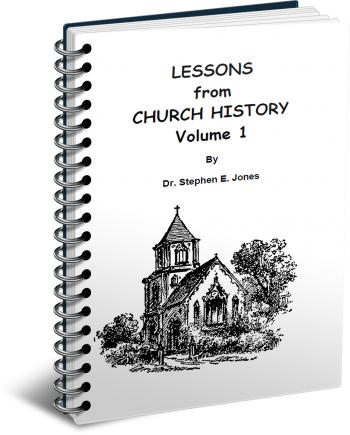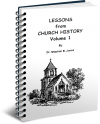Latest Posts
View the latest posts in an easy-to-read list format, with filtering options.

Volume 1. This gives a short history of the Church from the apostles to the Roman War, including Luke’s account of Paul’s journeys in the book of Acts. It includes Paul’s fourth missionary journey to Spain and Britain.
Category - History and Prophecy

Philip Schaff's History of the Christian Church, Vol. 1, p. 353, dates the Jerusalem Church Council in 51 A.D. It was just eighteen years after Pentecost that the circumcision issue came to its crisis point.
The Church seems to have followed the pattern of King Saul, whose primary crisis came in the eighteenth year of his reign (1 Sam. 15:11). The outcome of that experience was that Saul was rejected, and Samuel anointed David as his replacement. I wrote about this in Secrets of Time.
King David too reached his crisis point in the eighteenth year of his reign when Absalom usurped his throne for a season. There seems to be a pattern here, and so it is no surprise to find the Church in its first major crisis in 51 A.D.
The Council composed a letter to be read in the churches (Acts 15:30), and this was taken to Antioch. Verse 31 says, “And when they had read it, they rejoiced because of its encouragement.” History shows, however, that not everyone was happy with this ruling. We see from this point the rise of two sects, the Ebionites and the Nazarenes, who continued to insist that circumcision was necessary to be in covenant with God. To them, the Old Covenant had not been broken or put away.
James and the Jerusalem Church continued to worship in the Temple, offer sacrifices, keep their holy days in the Old Testament manner, refrain from eating with non-Jewish believers, and observe all of the other forms which the Jews equated with the divine law.
These groups, however, had hitched their future to a falling star, for Jerusalem’s destruction in 70 A.D. would destroy the central feature of Judaism wherein they trusted. Likewise, their narrow exclusiveness and demand for circumcision only served to repulse non-Jews. Few non-Jews were attracted to a religion which made them second-class citizens. This kept their numbers small. Their primary field of evangelism was within Judaism itself, and success in that arena was quite limited, due to priestly opposition. For this reason, these sects remained minor blips on the screen of history, while the rest of the Church flourished.
Even so, it should be noted that Jerusalem was the center of Christianity until its destruction in 70 A.D. The Apostle Paul himself recognized this and made the trip to Jerusalem to submit his revelation to James and the other council members.
Even after the destruction of Jerusalem, Christians returned to that area and re-established the church on the summit of the Mount of Olives. Eusebius writes in Proofs of the Gospel,
“Which it is possible for us to see literally fulfilled in another way even to-day, since believers in Christ all congregate from all parts of the world, not as of old time because of the glory of Jerusalem, nor that they may worship in the ancient Temple at Jerusalem, but they rest there that they may learn both about the city being taken and devastated as the prophets foretold, and that they may worship at the Mount of Olives opposite to the city, whither the glory of the Lord migrated when it left the former city. [VI.18]
He tells us that this location was chosen because of its connection with the glory of God last seen there in Ezekiel 11:23 before Jerusalem’s destruction at the hands of Nebuchadnezzar. In the New Testament, this was the place where Jesus, the Glory of God, was crucified and later ascended to heaven. Thus, they associated that location with the glory of God and made it the center of Christianity.
It was from this location that James’ successor, Symeon, ruled as the bishop of Jerusalem after 70 A.D. Jerusalem had Jewish bishops until 135 A.D. when Jews were forbidden by law to set foot in Jerusalem. At that point, we see non-Jewish names in the list of Jerusalem bishops.
The point is to show the importance of Jerusalem even in the mind of the Apostle Paul, who remained essentially submitted to Jerusalem. His gospel was not in opposition to Jerusalem, but was preached under its authority, sanctioned by James himself at the first Jerusalem council in Acts 15.